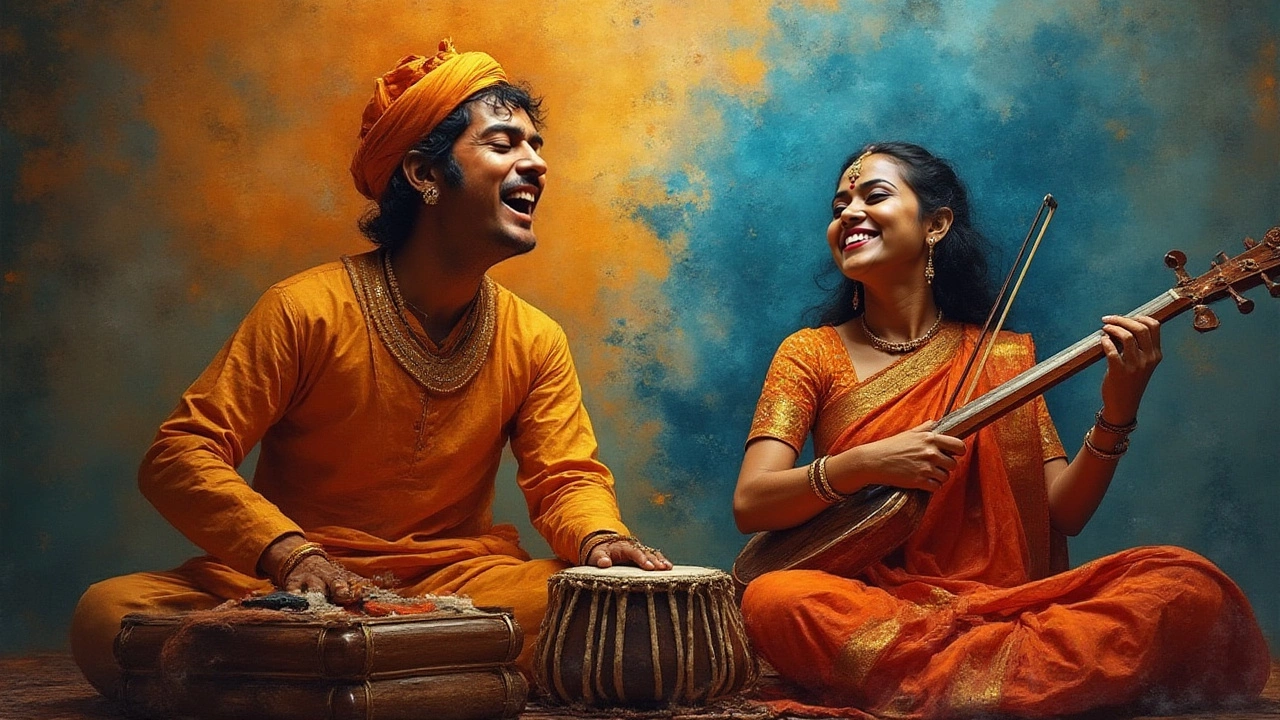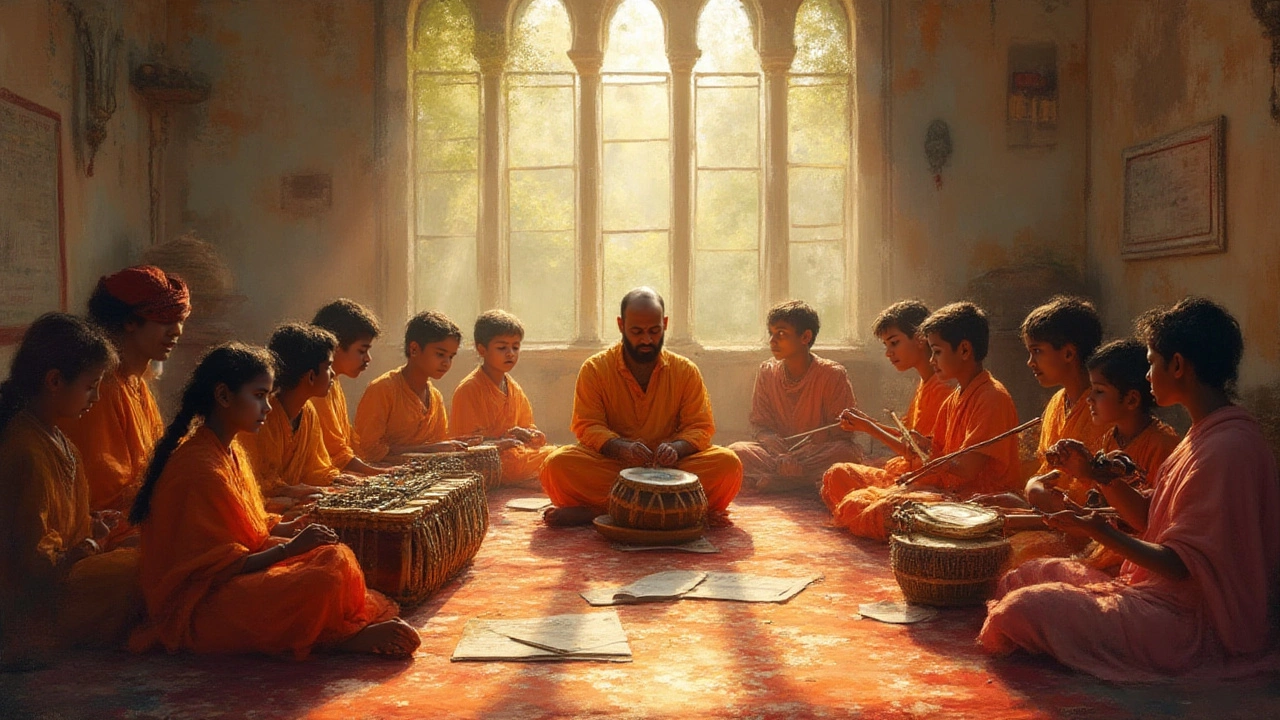Picture this: two singers, both absolute beasts in the world of Indian classical music, meet for a jam session. The first blows you away with languid improvisations that stretch a single note for what feels like eternity. The second fires off lightning-quick swaras (notes) in complicated phrases you can barely wrap your head around. This isn’t a contest—just a taste of the huge differences between Hindustani and Carnatic music. But it leaves you thinking: which of the two is actually harder to master?
The Roots: How History Shapes the Challenge
If you just start with how these styles came to be, you already get a sense of the demands each puts on students. Hindustani music grew up in the North of India, shaped by centuries of movement, blending, and outside influence—think Persian, Mughal, even Central Asian sounds creeping in. Carnatic music rooted itself in the South and is fiercely loyal to tradition. Its world moves less, but digs deep—fastidious about form, detail, and preserving purity.
The North saw the musical world open up to slow, soul-searching improvisation. Raga and tala stretch out in Hindustani, offering plenty of space for creativity. The South, on the other hand, organized itself meticulously. The formulas became complex, structure iron-clad, the pace often brisk. You can feel this legacy in how they’re both taught: Hindustani feels like diving into a flowing river, and Carnatic is like learning to run an obstacle course in a storm.
The Technical Layers: What Makes Each Hard?
Let’s get real about what trips people up. In Hindustani music, the heart is the raga—each with its own personality, set of rules, and forbidden moves. You need to nail the slow build-up (alaap), the fast sections (drut), and learn to improvise in the moment while making sense. This isn’t jazz with a set of blueprints—it’s centuries-old poetry, and every slip stands out. There’s nowhere to hide.
Carnatic, though? Welcome to the nitty-gritty. The compositions are absolutely packed. Imagine memorizing a new tongue, every line full of complex rhythm changes (tala), syllables flying within milliseconds, and a need to land exactly right or risk the whole piece toppling. You have to memorize thousands of kritis (songs), many deep with philosophy, myth, and even local dialects that trip up native speakers. Rhythm here is king, and complexity is the norm.
This technical gap shows up vividly when you look at vocal exercises. A Hindustani student might spend entire sessions perfecting one phrase, stretching their breath and tone. Carnatic training? It’s relentless: hundreds of patterns, repeated for hours, with each exercise building the kind of muscle memory top athletes wish they had. Students often joke that fingers and brains cramp faster in Carnatic.
Real Stats: Comparing Time and Performance
You’d think most kids would run for the hills after seeing what’s required. But India’s still raising thousands of students every year in both traditions, and some stick with it for decades. According to one survey published by the Sangeet Natak Akademi in 2023, the average Carnatic student spends about 7-10 years to reach a professional performance level, mostly because of that brutal focus on compositions and rhythmic mastery. Hindustani learners often take a bit longer—10-12 years is common—partly because so much is centered around improvisation, which builds more slowly over time and with guidance.
| Aspect | Hindustani | Carnatic |
|---|---|---|
| Base Training Years | 3-5 | 4-6 |
| Mastery Timeline | 10-12 years | 7-10 years |
| Vocal Exercise Types | Long note emphasis, improvisation | Fast phrases, intricate rhythms |
| Number of Standard Compositions | ~100 | 2000+ |
| Improvisational Expectation | High (especially in Raga) | High (especially in Kalpana swara) |
This isn’t one of those fake-it-’til-you-make-it art forms, either. Both require years of relentless practice, keen ears, and constant feedback. What’s interesting is how audiences respond: Hindustani listeners are glued to every micro-shift in mood and note, while Carnatic crowds are counting, nodding along, waiting for a tricky rhythmic punchline. If you want applause, you’d better nail it—mistakes rarely slip through unnoticed.

Learning Experience: The Student’s Perspective
Ready for a reality check? Spend a few days with a beginner in each system. The Hindustani rookie might get lost in the world of meend (the delicate slides between notes) and andolan (gentle oscillation), sweating over pitch precision. It’s like balancing on a tightrope, obsessed with every nuance. Their practice is about patience, soaking in every moment and letting the music breathe through them.
On the Carnatic side, the student faces a different kind of pressure. Fast, dynamic, and relentlessly detailed, the workload can feel like cramming for the world’s hardest math exam. Got a kriti to learn? Better break it into tiny, digestible bits. Got a rhythmic phrase (korvai) to master? Prepare for hours of mind-numbing drills. And don’t even start about sight-reading notation—Carnatic swara sheets look like secret codes.
If you want proof, ask any teacher to show you a typical week’s lesson plan. One Carnatic teacher described juggling up to five new kritis per month, on top of daily exercises. A Hindustani guru, on the other hand, might spend an entire month on a single raga, delving deep into its every shade of emotion. Students in both streams often say the first few years are the toughest; after that, they either fall in love or run the other way.
Tips for Surviving—and Thriving
You want to pick the right path? Think about your personality and what draws you to music. Do you love freedom and soul-searching through sound? Hindustani might be your home. Does your mind crave challenge, math, and drilling down to the tiniest detail? Carnatic could be your calling.
- For Hindustani: Focus on patience and endurance. Practice slow, make a habit of listening to greats like Bhimsen Joshi or Kishori Amonkar. Watch how they slide and bend notes—try to echo that in your own work. Make improvisation your friend, not your fear.
- For Carnatic: Start slow, but tackle rhythm head-on. Use a metronome (or a good app) to get comfortable with different talas. Listen to stalwarts like M. S. Subbulakshmi, Aruna Sairam, or Sanjay Subrahmanyan to hear how they swing from one tricky rhythm to the next without missing a beat.
- Don’t underestimate practice. Both traditions demand daily grind—there’s no shortcut. Experts say at least 1-2 hours a day, split between voice exercises, learning compositions, and experimenting with improvisation.
- Record yourself—back in the day, it was all cassette tapes; now, your phone is enough. Play it back and listen for mistakes. Hearing yourself is brutal but helpful. It’s how most rising stars catch and fix flaws.
- Never skip theory. Carnatic, especially, throws reams of terminology at you—learn what every term means so you don’t get lost during lessons.
If you ever get the urge to cheat (and everyone does), remember that progress in classical music is almost never overnight. The muscle memory and intuition only come with honest hard work and an open mind.
Which Is Harder? The Not-So-Simple Truth
At the end of the day, asking whether Hindustani or Carnatic is harder is like asking if chess or Go is tougher. They’re built differently. For some, the creative freedom and emotional depth in Hindustani are both a draw and a hurdle. For others, the logic and quick-fire brilliance in Carnatic hold the real challenge, especially once you get past the basics.
Most musicians who dabble in both will tell you this: you can’t fake mastery in either. Both traditions test your ears, your technique, your patience, and your ability to put a stamp of personality on ancient forms. If you want a straight answer? Fine—it depends on you. Both have steep learning curves, massive discipline requirements, and a lifetime of surprises.
Next time you hear a raga unfurl late at night or a kriti bounce with impossible ease, just know you’re hearing decades of sweat, joy, and stubbornness—regardless of which style you pick.
